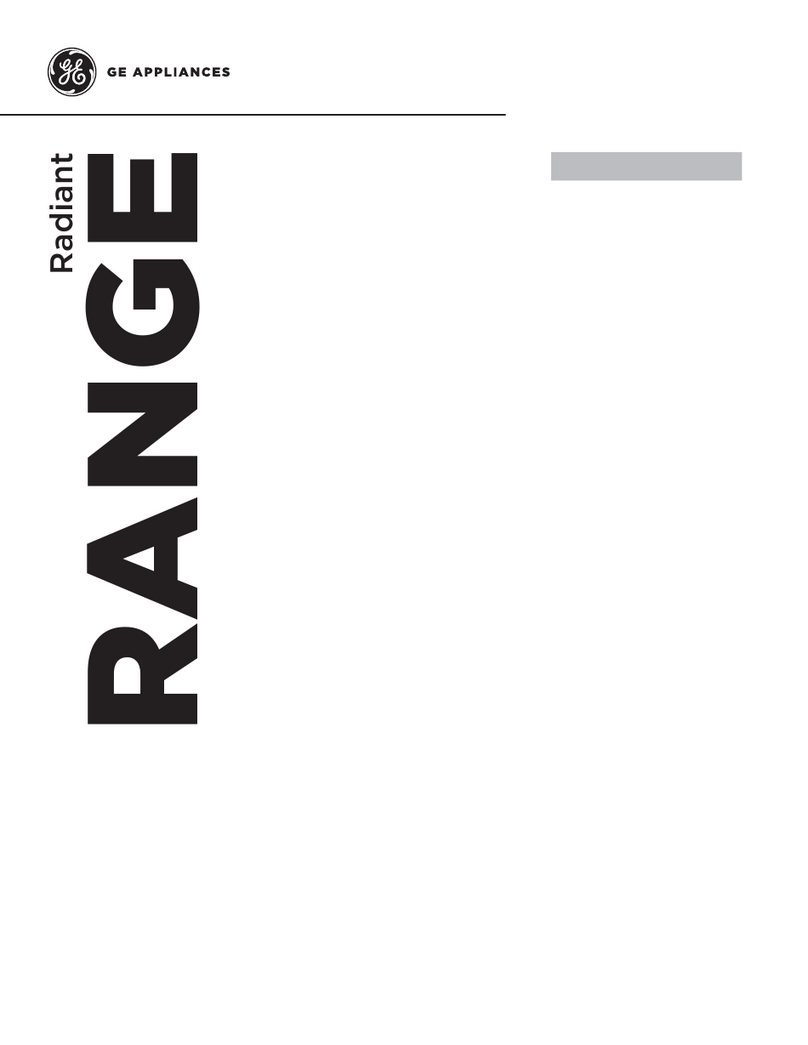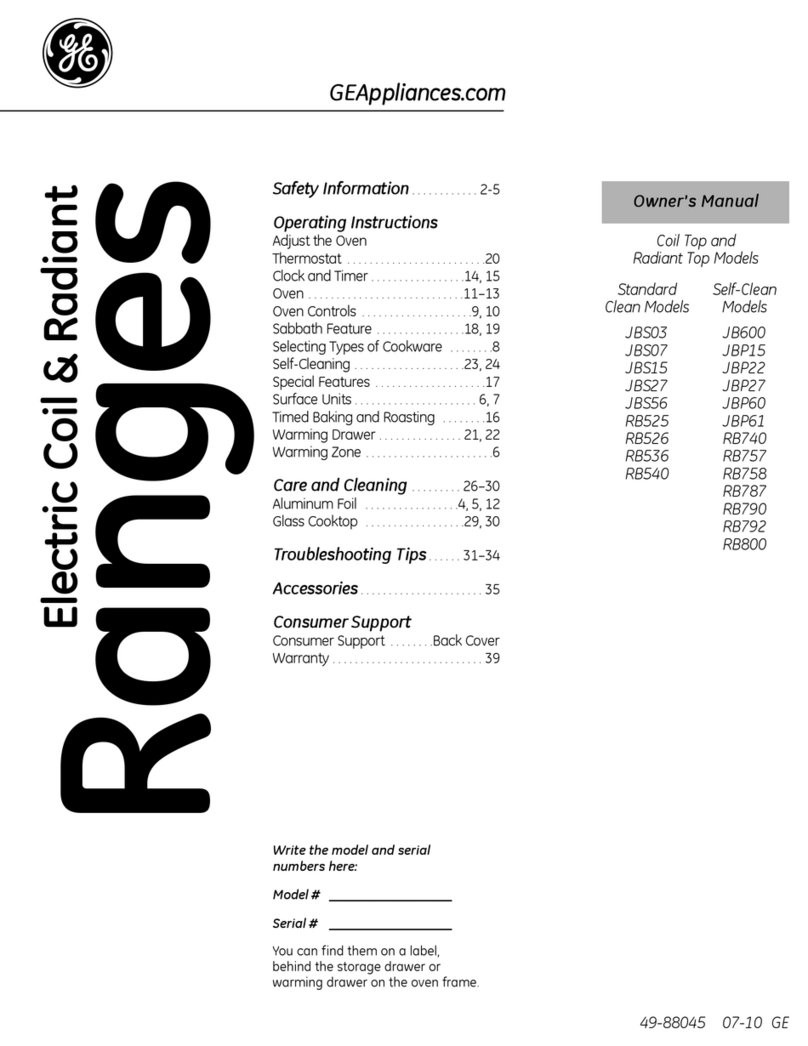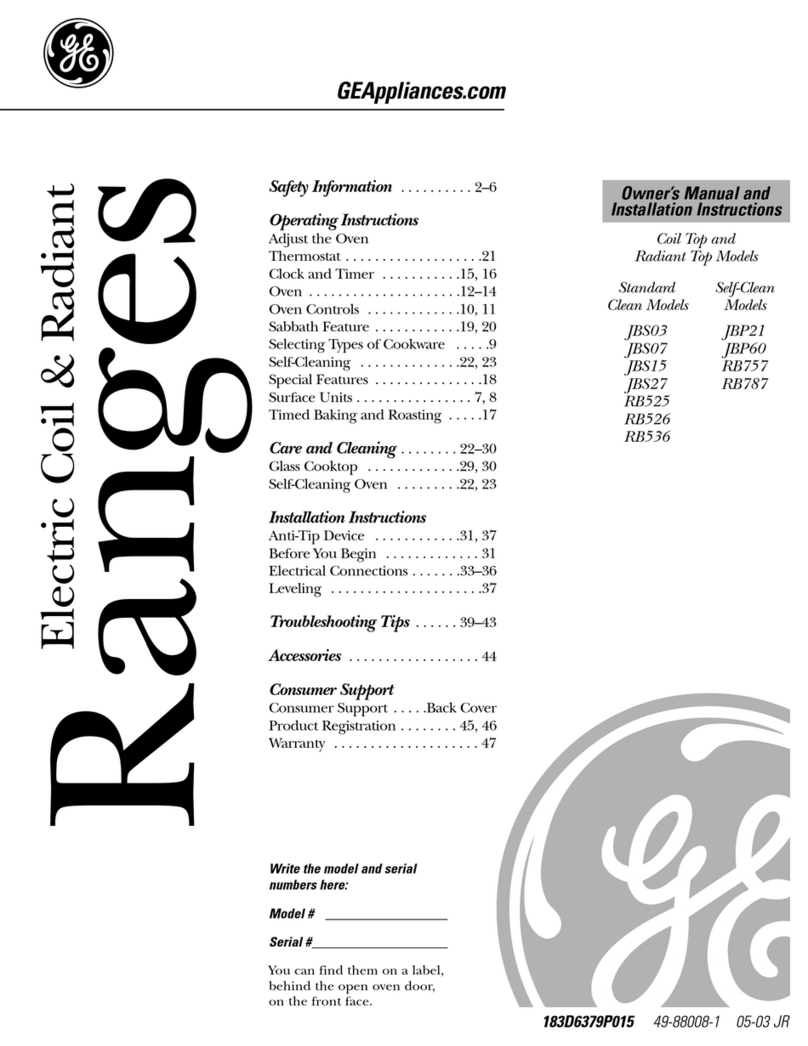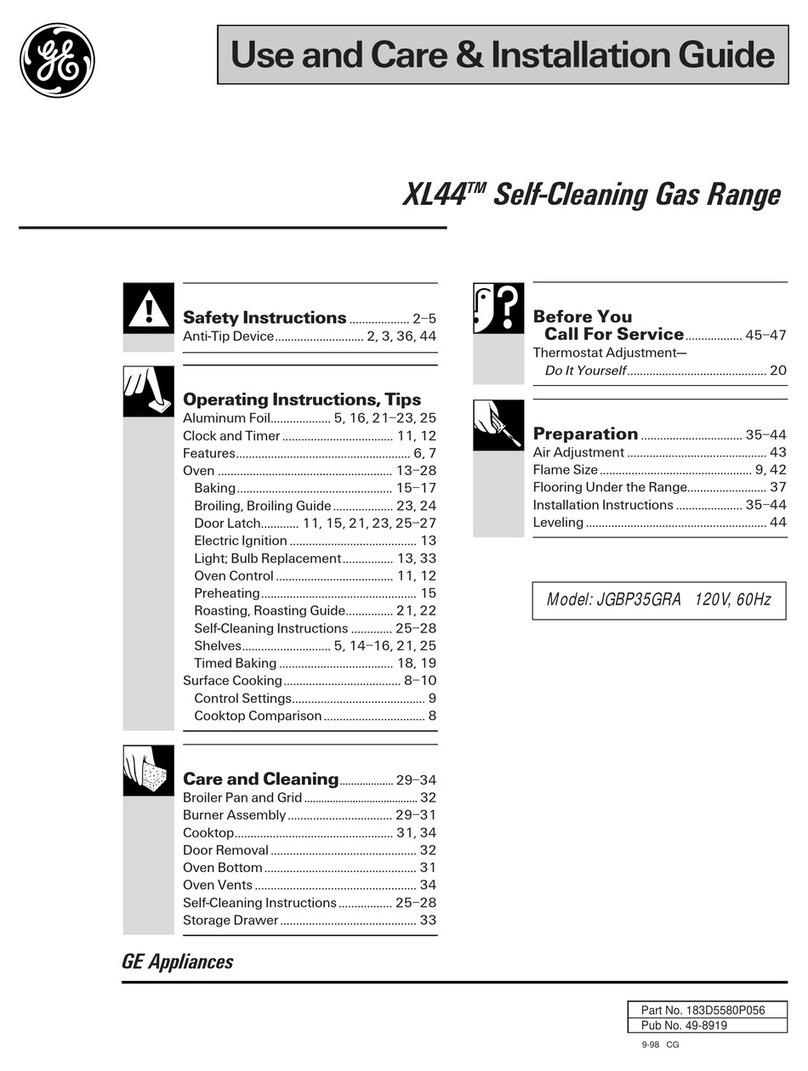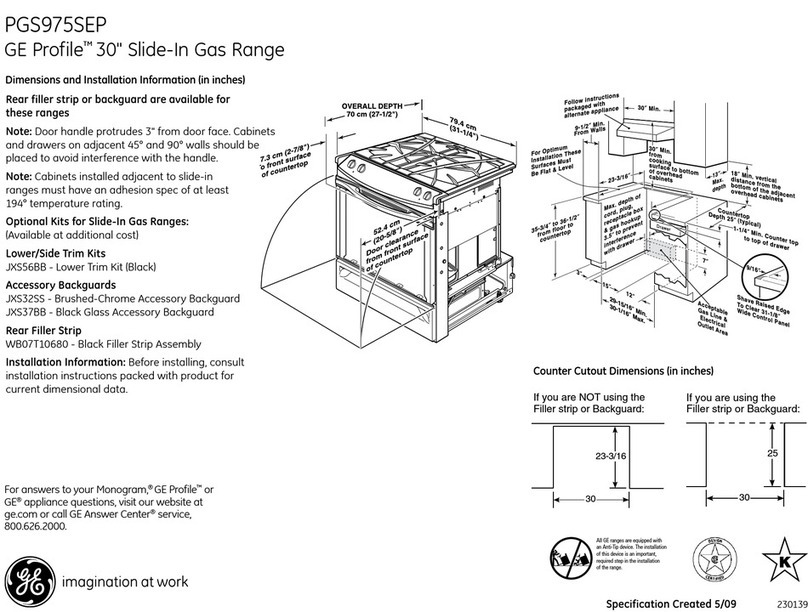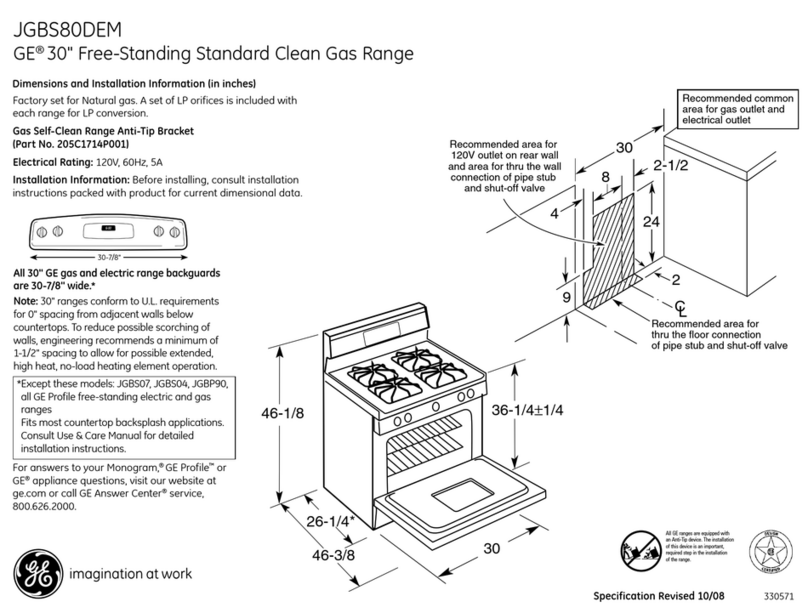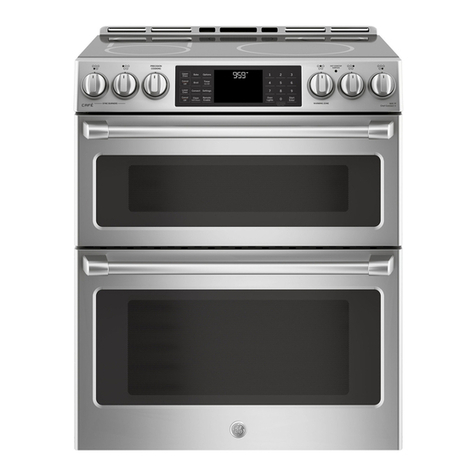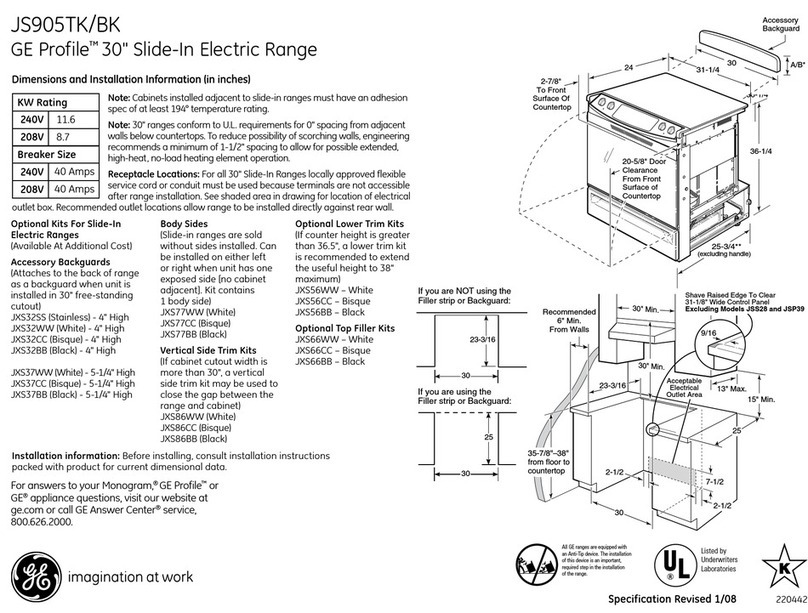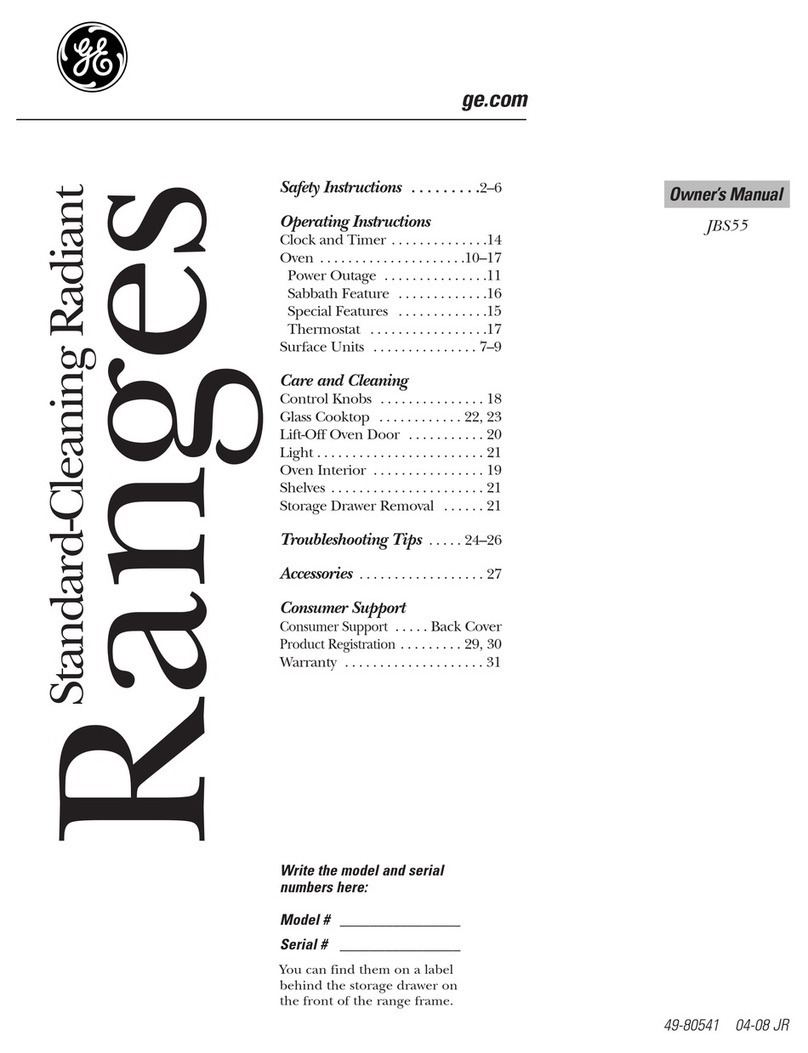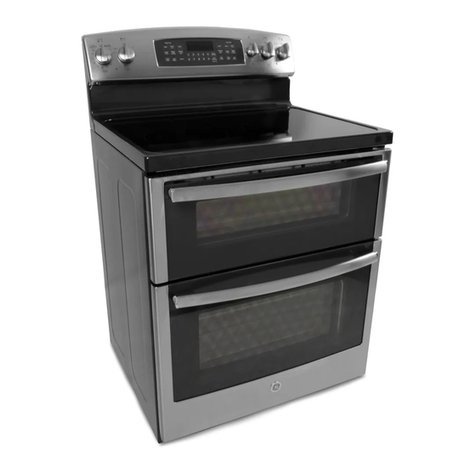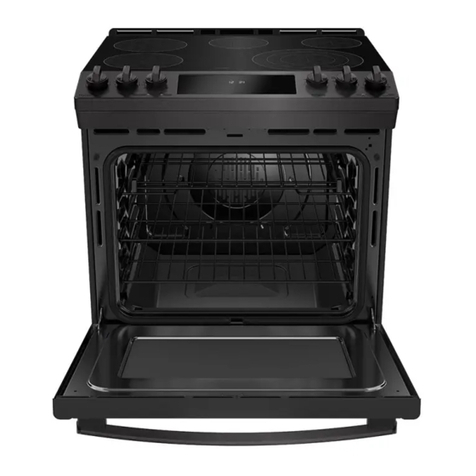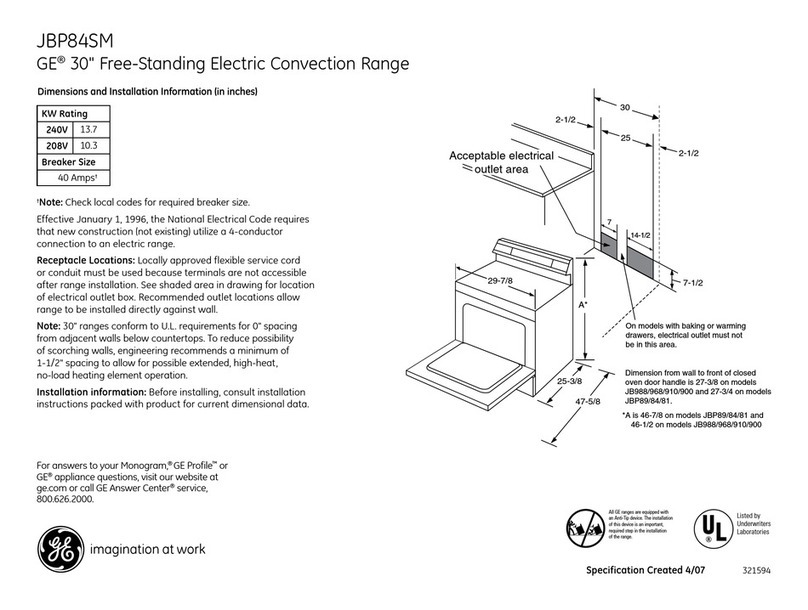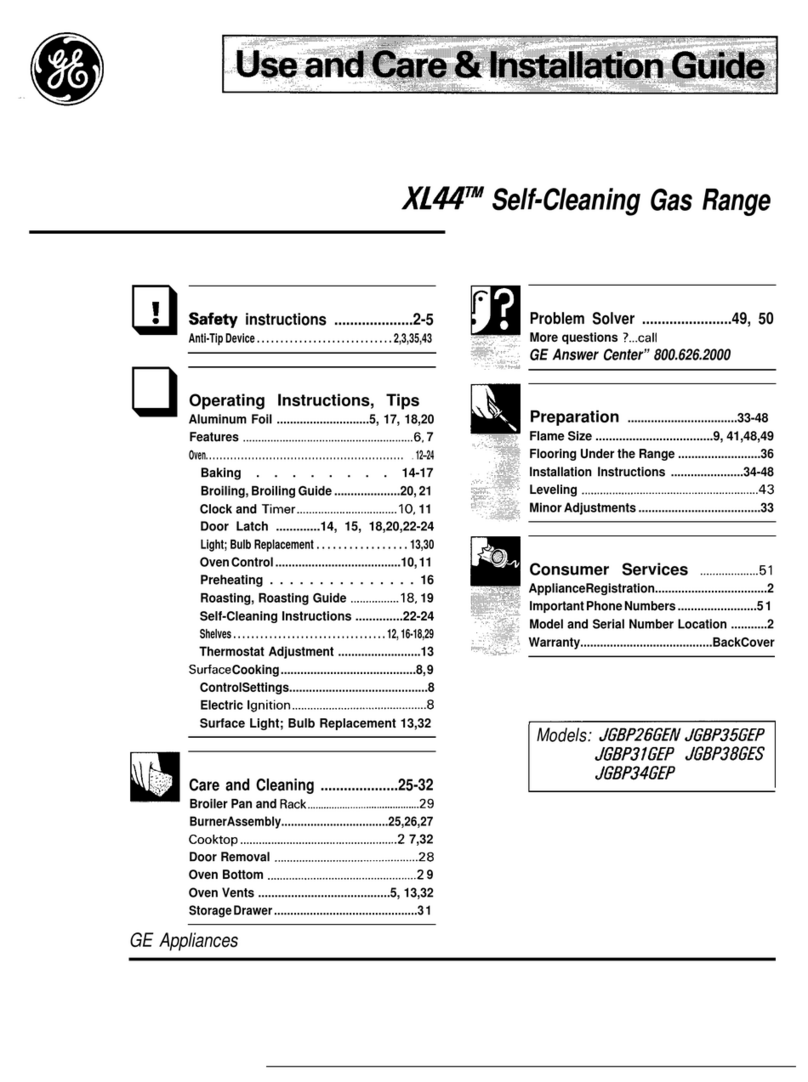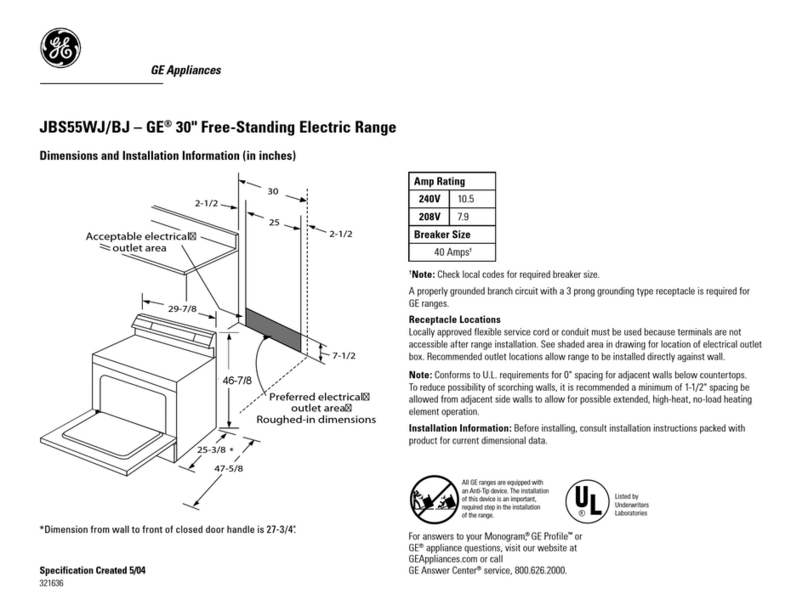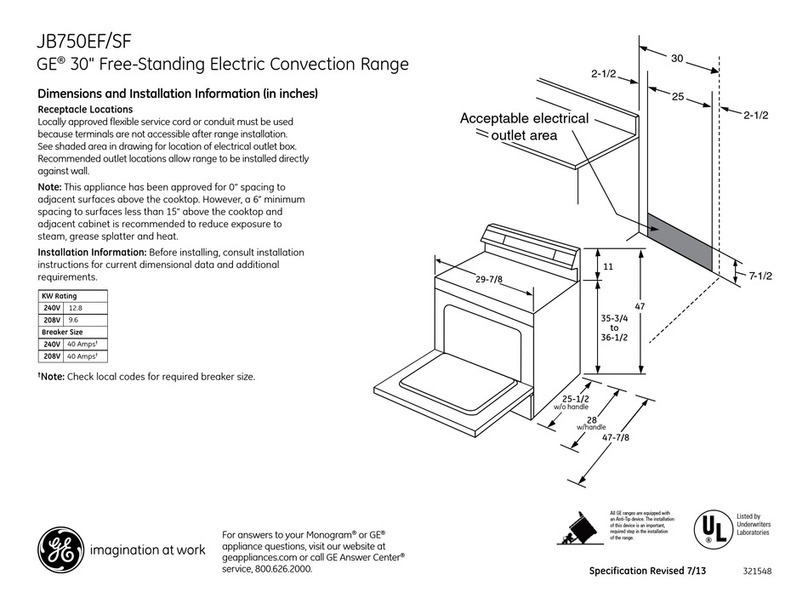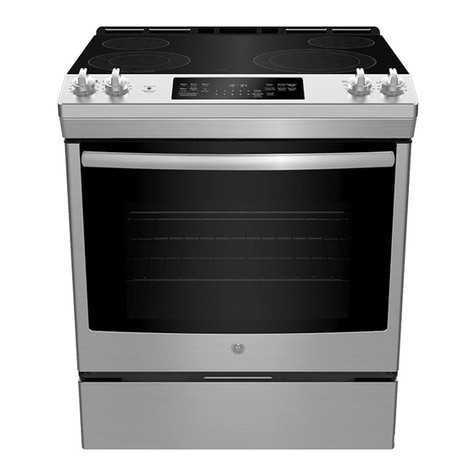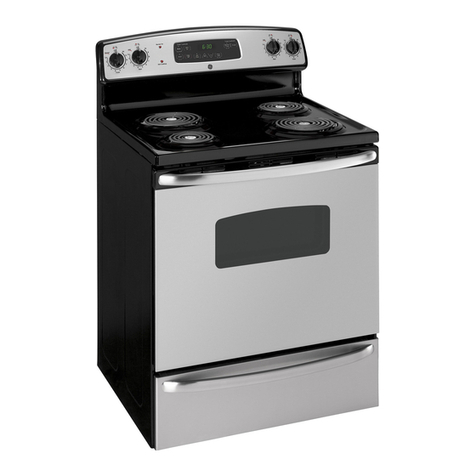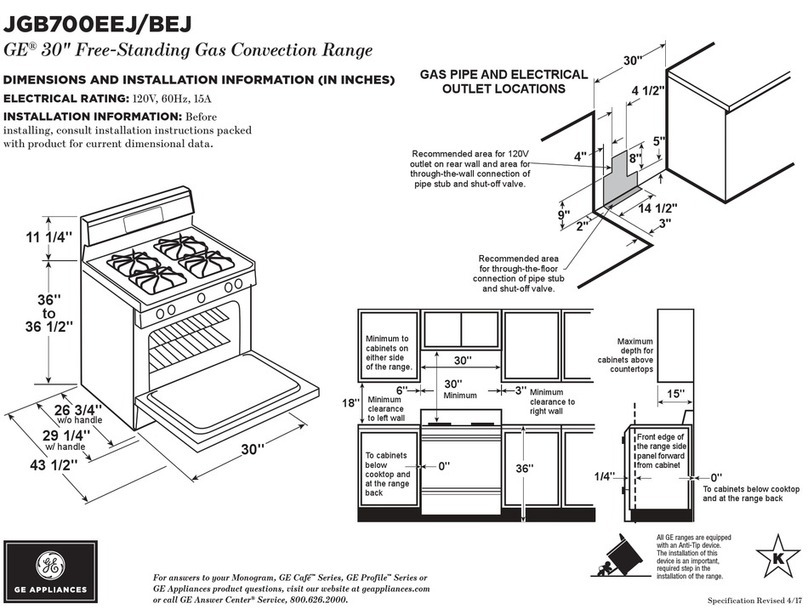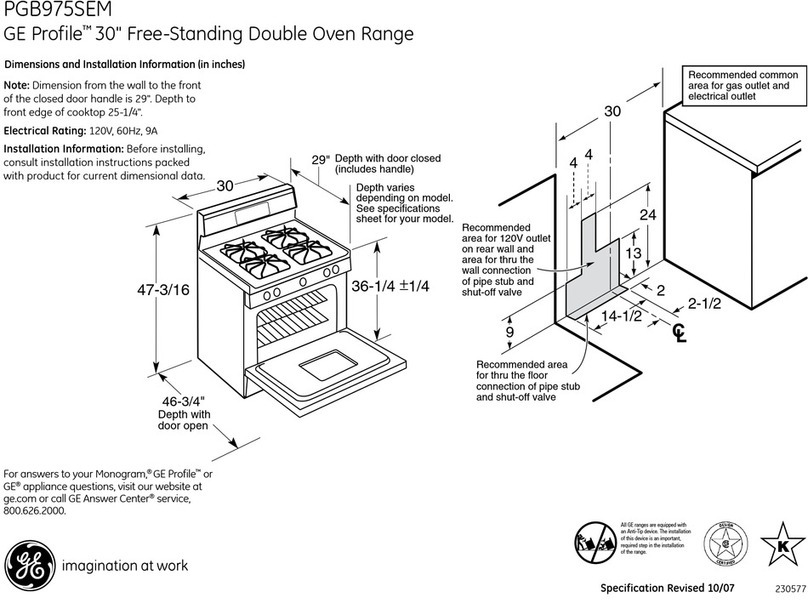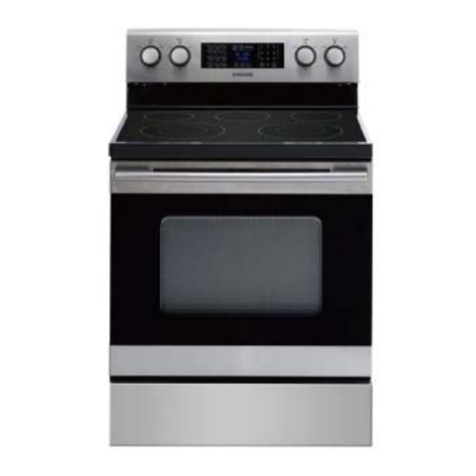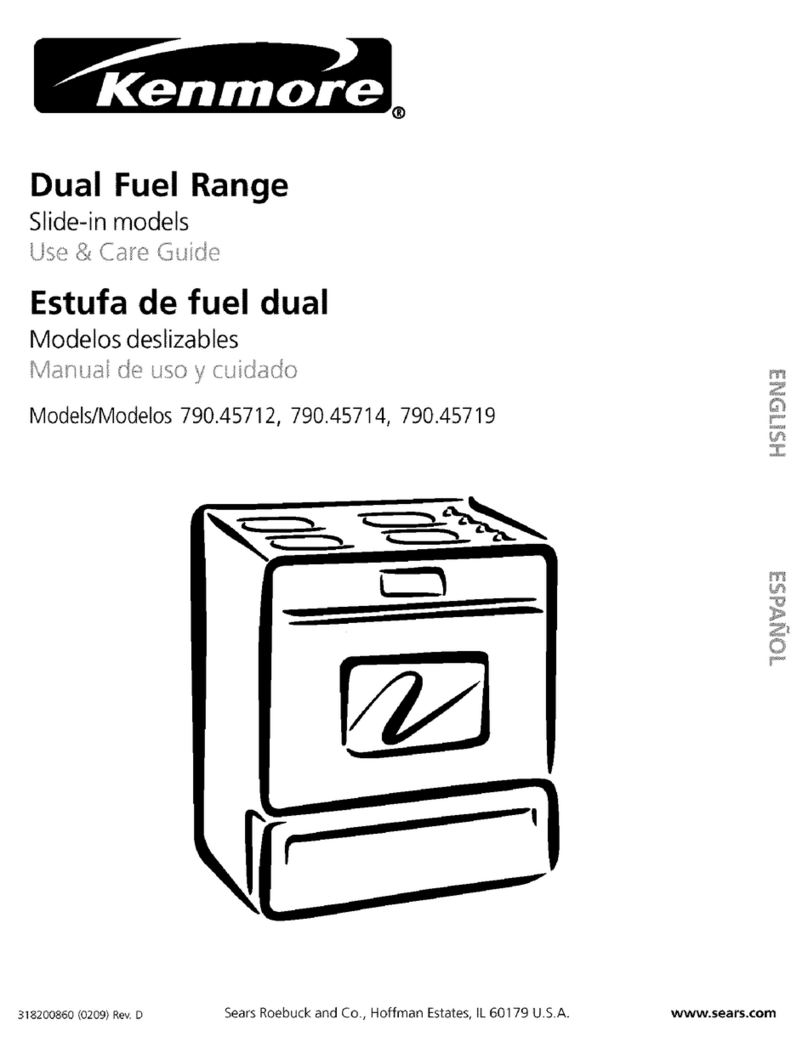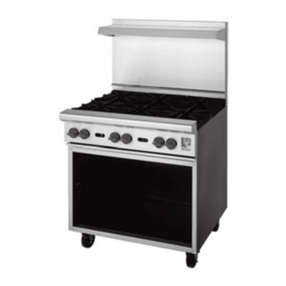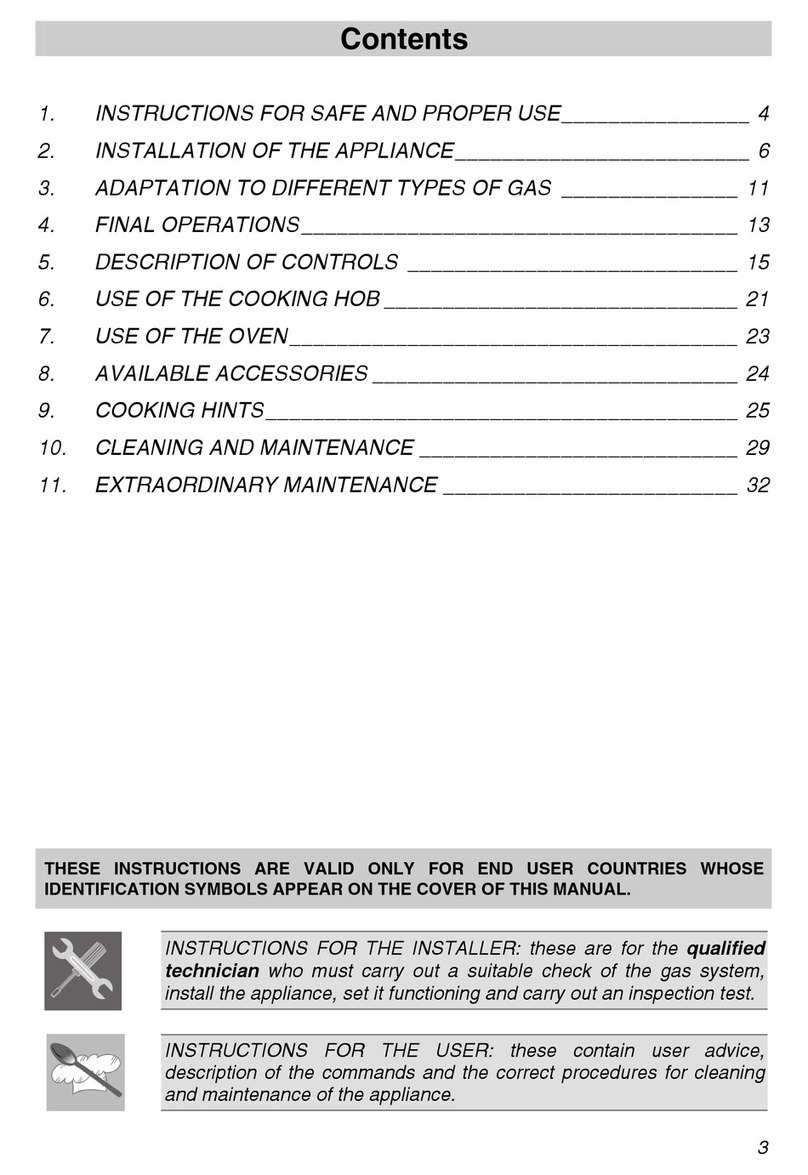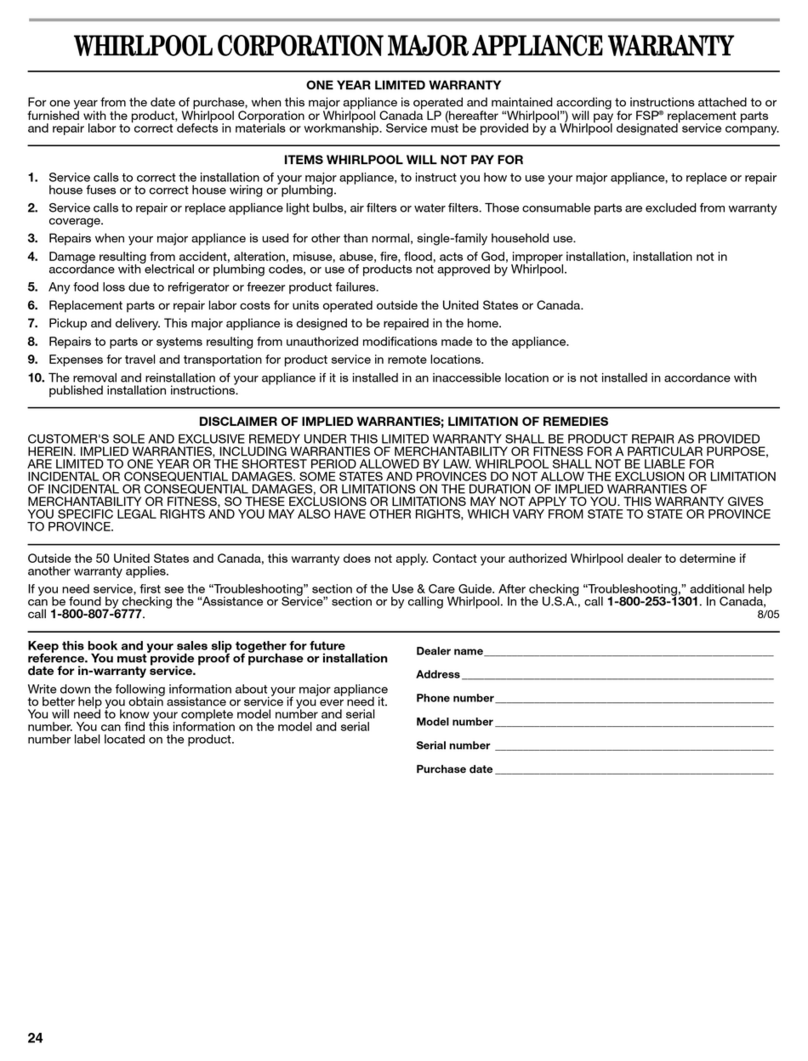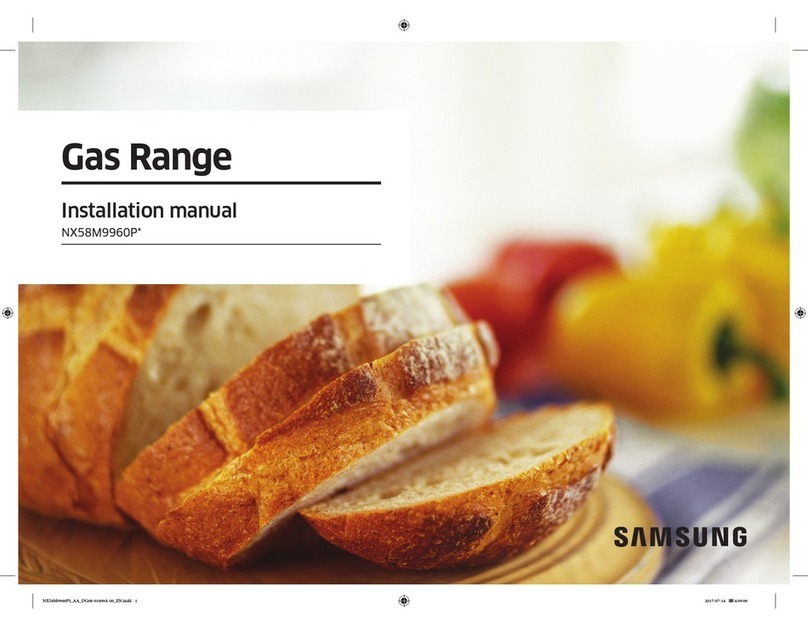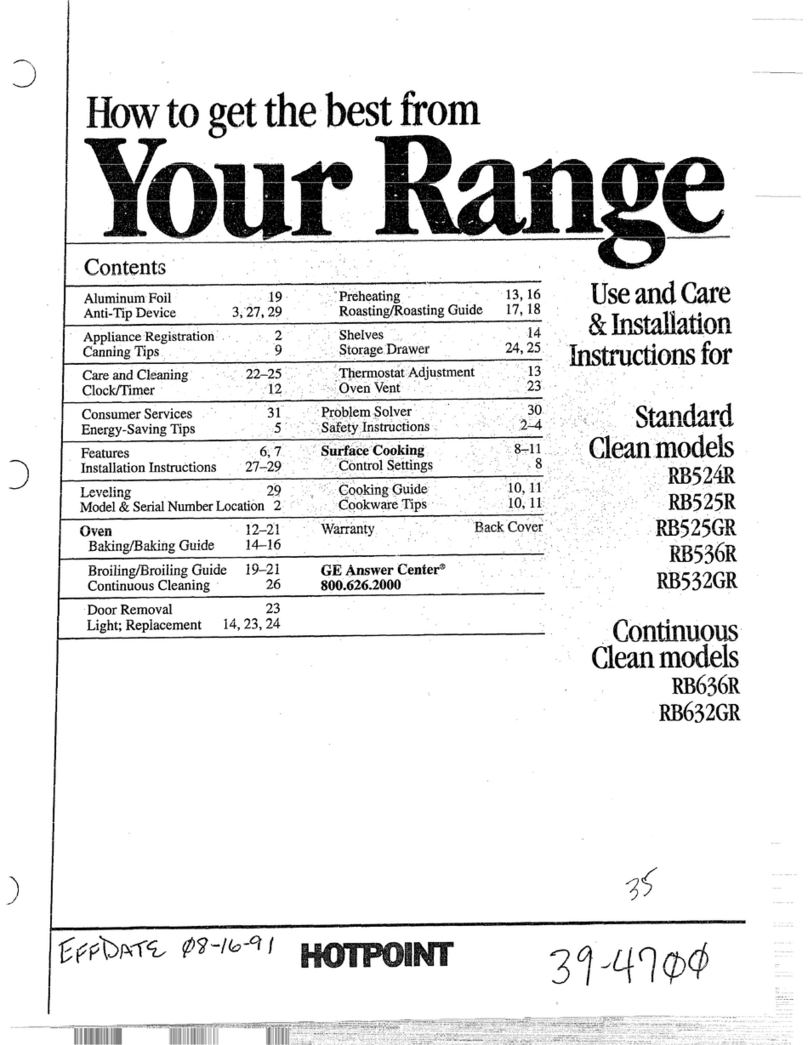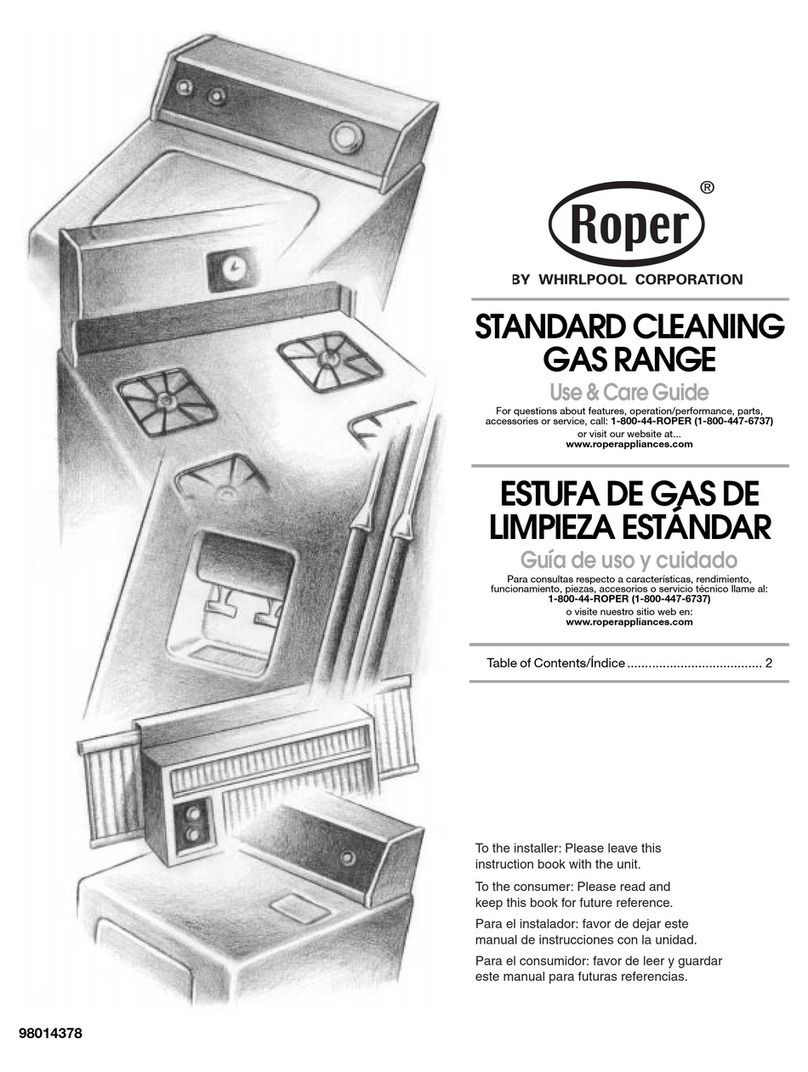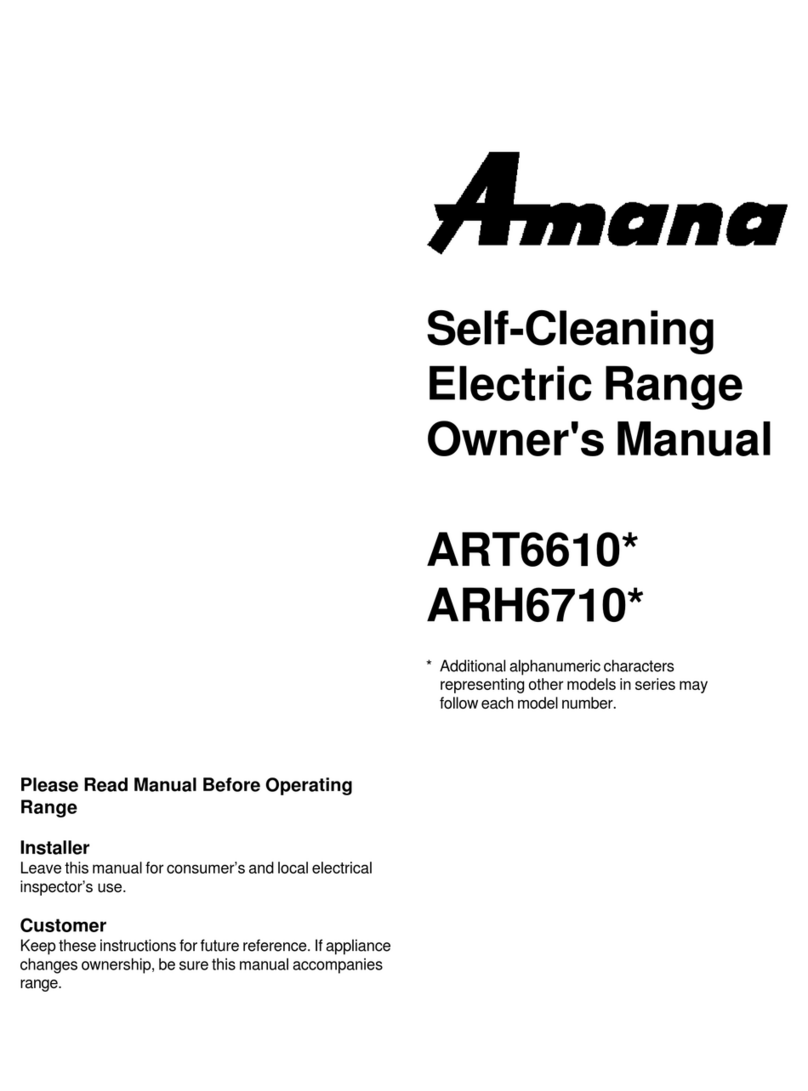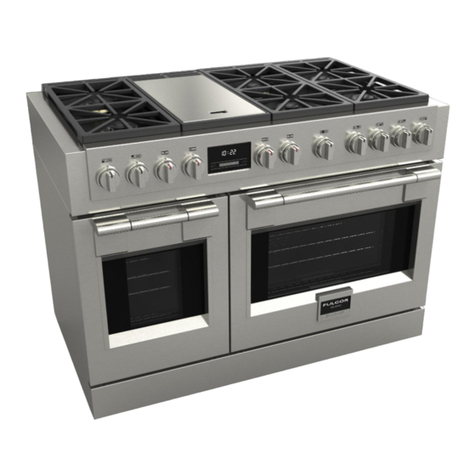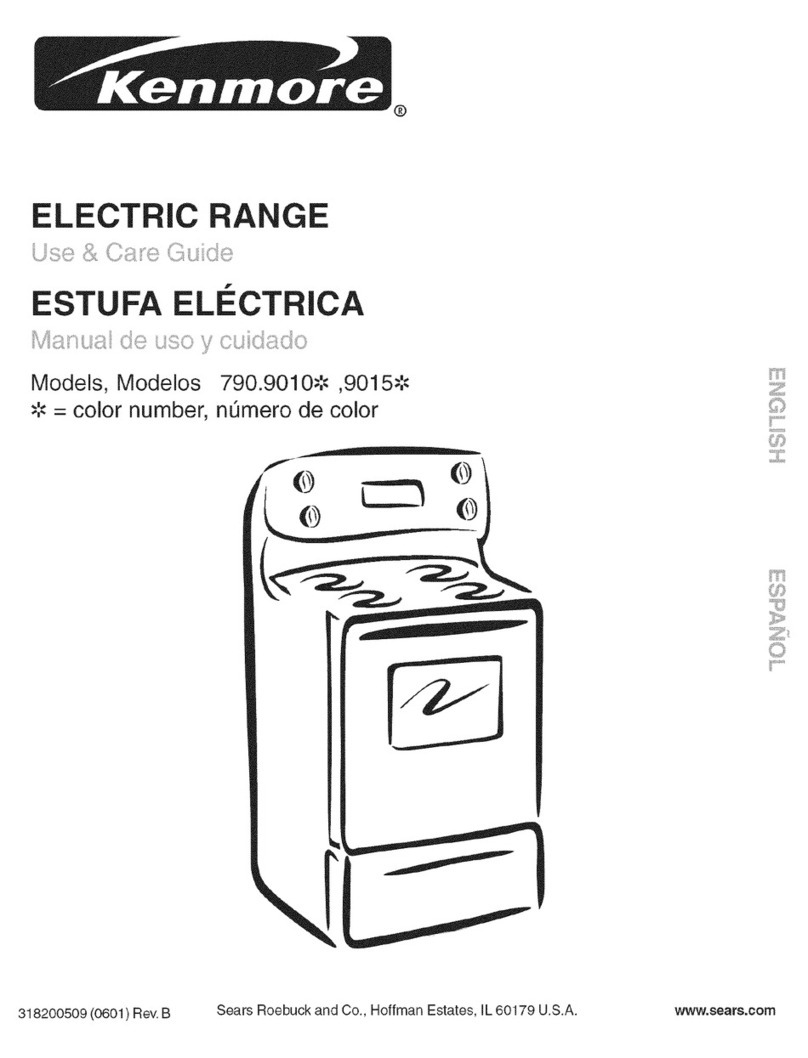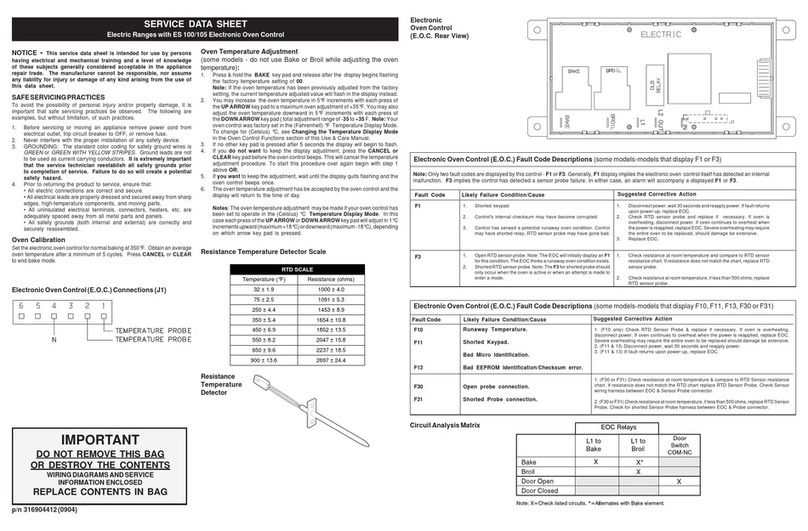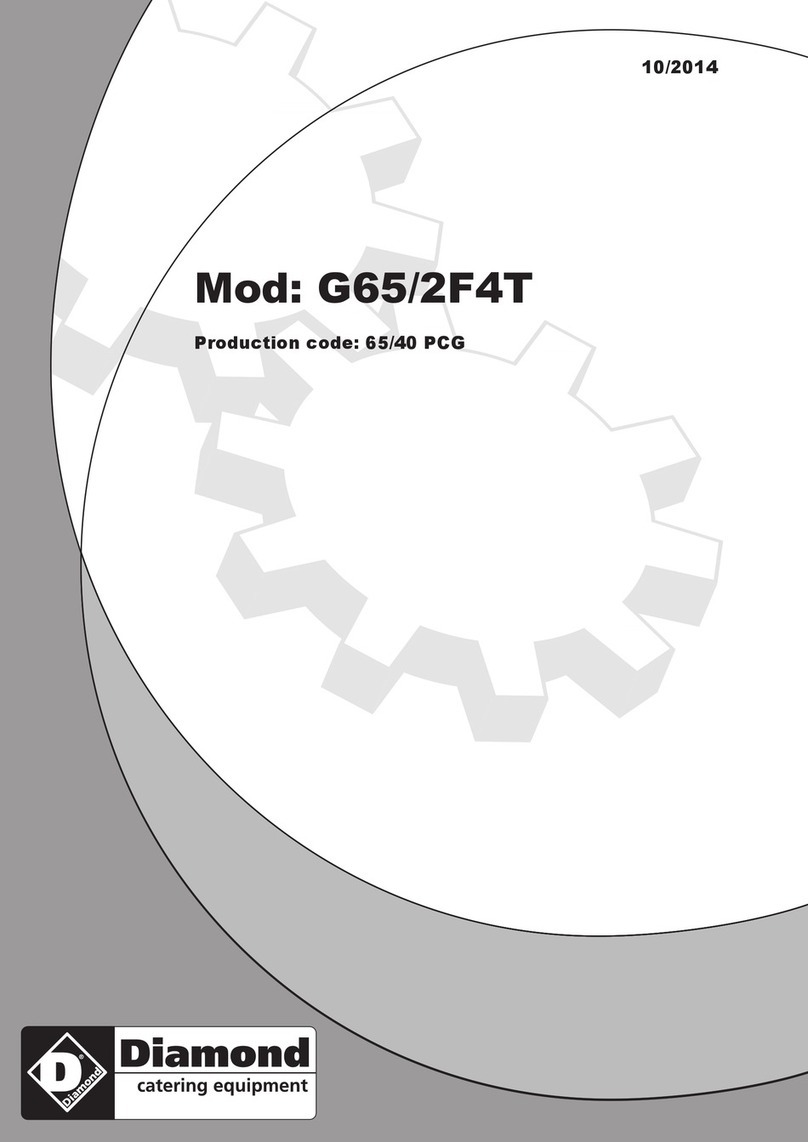@Wand akvayfrom the range
when openingovendoor.The
hot airor steamwhich escapes
can causeburnsto hands,face
and~oreyes.
@Don’theat tmopenedfood
containersin the oven.Pressure
COW buildup and the container
could Iix4rstcausingjan injury.
sKeep oven vent ducts
unobstructed.
eKeep oven free from grease
build up.
eplace oven rack in desired
position while oven is cool. If
racks must be handled when
hot, do not let potholder contact
heating units in the oven.
opulling out shelf to the sheif
stop is aconvenience in lifting
heavy foods. Ris also a
precaution against burns from
touching hot surfaces of the
door or oven waiis.
@When using cooking or
roasting bags in oven, foHow the
manufacturer’s directions.
@Do not use your oven to dry
newspapers. if overheated, they
can catch fire.
oven:
@Do notclean door gasket.
The door gasket is essentiai for
a good seai. Care shouid be
taken not to rub, damage, or
move the gasket.
eDOnot use oven cleaners.No
commercial oven cleaner or
oven iiner protective coating of
any kind should be used in or
around any part of the oven.
*Ciean oniy parts iisted in this
Use and Care Book
*Before seif-clearh~ the oven,
remove broiler pan and other
utermiis.
@Use Proper PanSize—-This
appiiance is equipped with one
or more surface units of
different size.Seiect utensiis
having fiat bottoms iarge
enough to cover the surface unit
heating eiement. ‘Theuse of
undersized utensils will expose a
portion of the heating eiement to
direct contact and may result in
ignition of clothing. Proper
relationship of utensii to burner
wiii also improve efficiency.
@Never leavesurfaceunits
unattendedat high heat settings.
Boilover causes smoking and
greasy spiiiovers that may catch
on fire.
I@Be sure refiector pans and
vent ducts are not covered and
are in piace. Their absence
during cooking couid damage
range parts and wiring.
@Don’t usedumhum foil to
line re!lectorpansor anywhere
in the oven except as described
in this book. Misuse could result
in ashock, fire hazard, or
damage to the range.
@Oniy certain types of giass,
giass/ceramic, ceramic, earthen-
ware, or other glazed containers
are suitabie for range-top
service; others may break
because of the sudden change
in temperature (SeeSection on
“Surface Cooking” for
suggestions.)
eTII minimizebums, ignition of
flammable materiais, and spill-
age; the handie of acontainer
shouid be positioned so that it is
turned toward the center of the
range without extending over
nearby surface units.
@Don’t immerseorsoak
removablesurface units. Don’t
put!them hadishwasher.
*A$ways turnsurface unitto —
CM%beforerernovingjutensiL —
*Keep an eye on foods being
fried at i-iiGi-i or MEDIUM HiGH
heats.
@TOavoid the possibility63fa
burnor electricshock,always
be certainthat thecontrolsfor
allsurfaceunitsare at OFF
positionand allcoilsare cool
beforeattemptingto removethe
unit.
@When flamingfoods under
the hood,turn the fan off.The
fan, if operating,may spread
the flame.
@Foods for fryingshouldbeas
dry as possible. Frost on frozen
fo~ds or moisture on fresh foods
can cause hot fat to bubbie up
and over sides of pan.
@Use iittie fat for effective
shaiiow or deep-fat frying. Fiii-
ing the pan too fuil of fat can
cause spillovers when food is —
added. —
@If acombination of oiis or
fats wiii be used ;n frying, stir
together before heating, or as
fats meit slowiy.
@Alwaysheat fat slowly,and
watch as it heats.
*Use deep fat thermometer
whenever possibie to prevent
overheating fat beyond the
smoking point. ~ÿ€
-.
—
4
